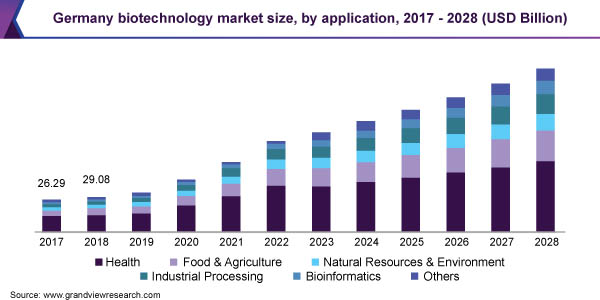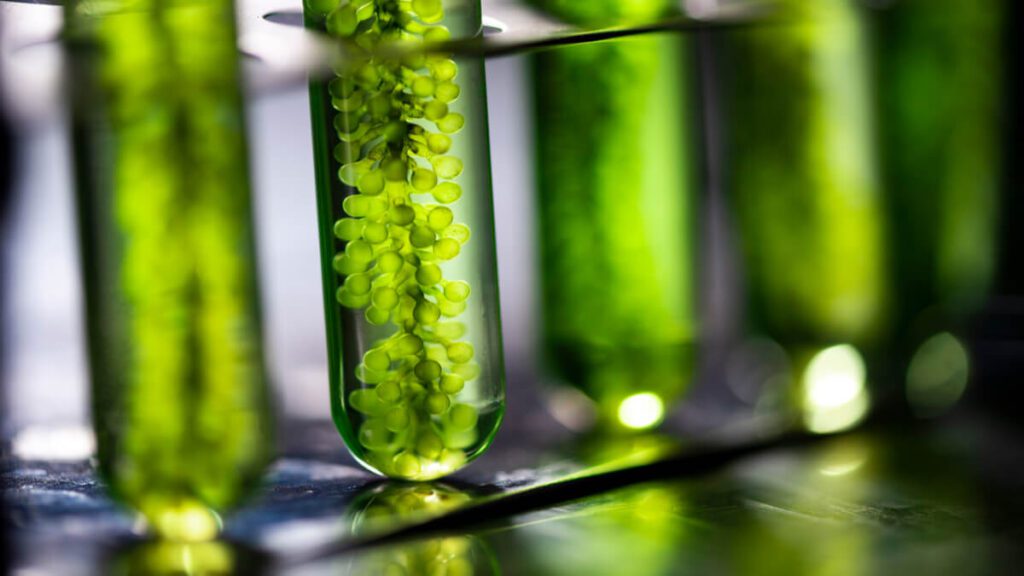
We humans are curious creatures. If we weren’t we would still be living in caves, if living at all. It is in our nature to pursue answers about the cosmos, why things are the way they are, how they came to be, and endlessly more complex questions.
Among the most baffling questions that keep scientists awake at night is ‘what is life’. The future of biotechnology may hold the answer to humanity’s biggest and most persistent dilemmas.
When we talk of human evolution and technological advancement, taming the stars and sporting machine-augmented bodies, biotech doesn’t get as much attention that it deserves. At least not beyond genetically altered super soldiers and the immortal ultrarich class of people in sci-fi movies.
According to Grand View Research, the biotech market is on a sharp upward turn. This is a result of government initiatives driven by greater investments by developing countries such as India and China, and a growing demand for personalized healthcare and orphan drugs.
The global biotech market, valued at around $752 billion in 2020, is projected to grow at a compound annual rate (CAGR) pf 15.83% from 2021 to 2028.

Many can imagine such a world with metallic limbs, self-replicating robots and artificial intelligent entities doing all the dirty work while the rest of us tend to them in a symbiotic relationship. Yet biotechnology has only recently come into the limelight and hit the ground running.
Software developers won’t be the only ones writing code anymore. Biotechnicians will merge into a new breed of software programmers, writing genetic codes, program the metabolic functions of a cell, and manipulate biology itself. Medicines, fuels, building materials, smart fabrics, cellular machinery, human augmentation, and the end of disease.
Processed Food, and Modified Crops
I know, I know, 3D printed steaks taste like sand and sadness. It’s no Ribeye or New York Strip, but it is a technology that is less than a decade old. Imagine a future where all 10 billion humans introduce meat in their diets that both tastes better and is cruelty and guilt-free.
The genetic modification of foods is nothing new, but it was done quite differently in the past, where crop seeds or animals with favorable traits were encouraged to breed.
The AgriTech startup scene, despite the pandemic, has soared to downright impressive heights, with team tackling everything from global food shortage to the climate impact of agriculture, to improved ethical practices in farming and animal husbandry.

India alone boasts more that 450 AgriTech startups currently working to preserve the food security of their countryfolk through various means, according to the National Association of Software and Service Companies (NASSCOM).
Now and increasingly into the future, crops can be genetically modified to grant previously unimaginable traits, be more nutritious, and yield greater amounts on a smaller plot of land.
Glowing plants and goldfish are easy, but what about the implications of crops grown vertically on the surface of the sea? Or a crop that grows multiple times the yield on a fraction of the space needed, or a crop that can withstand the unpredictable effects of climate change itself.
Waste Treatment and Bioremediation
Reduce, reuse, recycle, and then give up because a single corporation can waste more in a day than you can consume in a lifetime. That’s depressing, but as usual, science shines a light.
What if the most persistent creatures and natural processes on the planet developed a taste for plastics?
Plastic eating enzymes are coming soon.
French company, Carbios, is aiming to achieve industrial-scale recycling within five years, and have partnered with companies like L’Oreal, Nestle, and Pepsi to help further this goal. The company has recently concluded their first round of testing of their C-ZYME successfully, which could revolutionize recycling as we know it.
Landmasses of plastic waste can then be turned into livable, possibly even fertile land, and preserve ocean biodiversity and cleanliness.
Energy Production
Biofuels currently cannot compete with petro-gas companies; however, they could be seeing their products become a viable alternative in the not-so-distant future. Modern biotechnology solutions aim to replace petroleum fuels with biomass-based diesel fuel if the source can be harvested and processes in large – very large – quantities.
A big hurdle ahead of biofuels taking over is the amount of land that would be needed, precious land needed to grow food and animal feed.
Algae, which grows in water, was thought to be a viable option. It is both a food source for many animals, and they also clean up the atmosphere of carbon dioxide. Along with being a great resource for medicine creation, and so the economic incentive is there as a future renewable source of fuel.
According to the U.S. Energy Information Administration, the country currently gets 5 percent of its fuel from Biomass based sources, namely corn grown in the country’s center, and companies are aiming to turn that int a 20 in the coming decades.
It’s a long road ahead, but people are resourceful.
Therapeutics, Diagnostics, and Healthcare
Of course, what would the future of biotechnology be without medicinal applications? Humanity will no doubt see a major surge in stem cell therapies along with bioprinting, gene editing and nanomedicine.
Humans of tomorrow will be living with 3D printed hearts, livers, lungs and bones. Perhaps even one day print an entirely functional brain.
Nanomedicine has massive potential in fighting cancer. Nanobots can be used to destroy cancer cells from the inside by converting infrared light into heat energy, eliminating the cancer from the body, and then safely disposing of their tiny bodies. This is of course a young technology and has a long way to go, but it is in the pipeline.
Could fast healing of wounds be on the horizon?
Gene therapy has grown tremendously since the 1990s, and today we look at genetic editing with a less critical and more excited eye. As a result, both food tech and healthcare solutions have risen in dependability and demand.
The proof is in the pudding as just this September, two biotech stocks Leap Therapeutics (LPTX) and Corvus Pharmaceuticals (CRVS) doubled in value.
Taking concepts like Gene editing to the absolute extreme would be ‘designer babies’. If a parent is willing to edit their child’s genes to eliminate diseases, why not make them a little smarter, stronger, taller, or better looking. Hell, why stop there when you can make your child the perfect human, or as close as possible to it?
There are terrifying implications for this, however. Whenever there is demand, you can bet there will be a black market. If humans can be genetically altered to have certain features, what’s to stop a billionaire from creating his very own slave race? When genetic manipulation becomes mainstream, will “organic humans’ become second class citizens, viewed as inferior, a remnant of humanity’s inadequate past?
On top of that, how frustrating it must be to be the last generation of humans to ever die from natural causes.
Nevertheless, the positives of the future of biotechnology innovation far, far outweigh the negatives. The vision of humanity that has learned the most fundamental aspects of nature is a bright one.